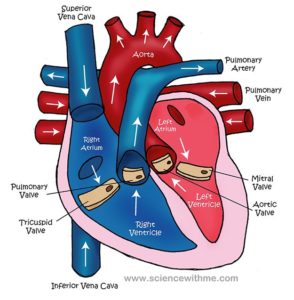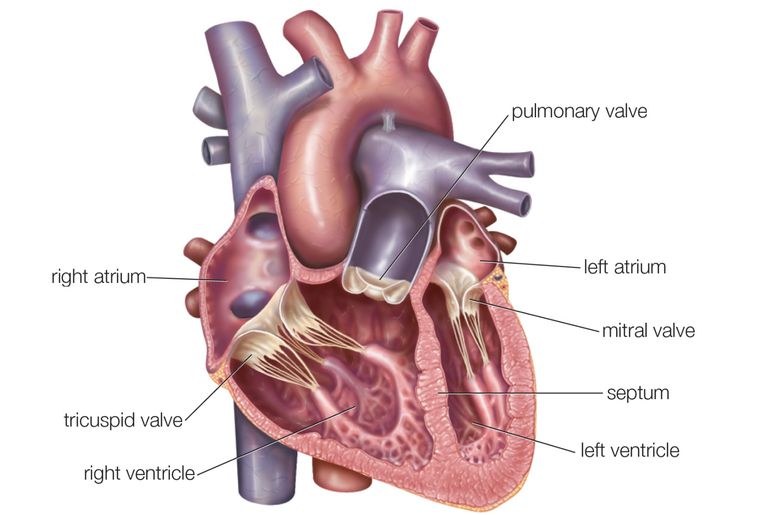You found yourself asking “How does my heart work?” Well, your heart is singularly amazing. It beats 115,000 times every day, moving more than 2,000 gallons of blood through your body. It’s a complex and wondrous machine that uses muscle, chemistry and electricity to bring us to life. To grow. To live and love and learn.
But how does it work? What impact does it have when the right or left side is underdeveloped? What happens when there is a hole in the heart? To understand congenital heart disease (CHD) we must first understand how the heart is supposed to work.

The heart is the center of the circulatory system. The circulatory system is a collection of blood vessels that channel blood to every inch of the body. Your heart has a right and left side, each working as its own pumping system. Those sides are separated by a wall called the septum. The right side takes in oxygen-poor blood from the body (via the superior and inferior vena cavas) and pumps it into the lungs to become oxygenated. The now oxygenated blood makes its way to the left side of the heart where it gets pumped out to the rest of the body. In other words, the right side takes in oxygen-poor blood from the body to pump it into the lungs, and the left side takes in oxygen-rich blood from the lungs to pump into the rest of the body. 1

The heart has four chambers called atriums and ventricles. There is a right and left atrium (upper chambers) and a right and left ventricle (lower chambers). 2 The divisions are there to keep oxygen-poor blood from mixing with oxygen-rich blood. Inside the chambers there are four valves that keep blood moving in the direction it is meant to go. They are the tricuspid valve, the pulmonary valve, the mitral valve, and the aortic valve. Each valve has coverings that open and close one time during every heartbeat. The oxygen-poor blood from the body fills the right atrium, then flows to the right ventricle where it is pumped into the lungs through the pulmonary arteries. The lungs give oxygen to the blood and it funnels through the left atrium to the left ventricle. There the blood travels through the aorta, the main artery that brings blood to the body. 3
Your heart beats by contracting (systole) and relaxing (diastole). In systole, the ventricles contract, pushing blood into the vessels flowing into the lungs and body. In diastole, the ventricles relax and fill up with blood from the left and right atria. This is the cycle of a heartbeat. It is controlled by the conduction system which is the electrical wiring in the heart. Electrical impulses start in the right atrium and go to the ventricles, signaling the heart to pump. The conduction system ensures the heart is beating at a normal rhythm to keep blood circulating. 4
What you’ve read is how a healthy heart works. However, millions of kids and adults in the U.S. live with congenital heart disease, a series of conditions where their hearts don’t work as they should. Which means that they don’t live with the freedom a healthy heart affords. For single ventricle CHDs, like HRHS or HLHS, the right or left ventricle is underdeveloped and therefore cannot get blood circulated properly. In PVS, the heart veins narrow, sometimes down to as small as a pin prick. In TOF, four defects occur at once.
There are many categories of heart defects each with its own variations from person to person. There are so many variations of CHD, we see only way to a cure — growing a normally functioning heart from the patient’s own cells. That would mean no rejection of transplant, no waiting on a donor list – just a healthy heart. Help us give kids and adults living with CHD the chance of a life without limits. Make a difference by making a monthly donation to help us cure CHD and grow a heart in 20 years.